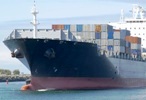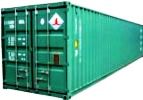Mubychem Group, established in 1976, is the pioneer manufacturer of Magnesium Phosphate, Pharmaceutical, Fragrance & Flavor chemicals in India. Mubychem Group has several manufacturing facilities spread across Gujarat and Mumbai India and world wide contacts and toll manufacturers. We are exporting globally to countries like USA, Europe, UAE, South Africa, Tanzania, Kenya, Egypt, Nigeria, Uganda, Turkey, Mexico, Brazil, Chile, Argentina, Dubai, Indonesia, Spain etc. |
|
The participating units have one or more accreditations like FDA - GMP approval; ISO-9001 Certified; "REACH" registered; ISO-22000; Kosher Certified; Halal Certified; HACCP. We offer Pure & IP BP USP FCC Food Grade ACS AR Analytical Reagent Grades of Chemicals |
|





Magnesium Phosphate USP FCC Monobasic Dibasic Tribasic USP FCC Grade Manufacturers
MSDS of Magnesium Phosphate USP FCC Manufacturers
Magnesium Phosphate
Technical & Pure Crystals
CAS Number 10233-87-1 & 7757-87-1 & 7782-75-4, IP BP Ph. Eur. USP ACS AR LR FCC Food Grades

Magnesium Phosphate USP Grade Specifications
Magnesium Phosphate
Mg3(PO4)2·5H2O 352.93
Phosphoric acid, magnesium salt (2:3), pentahydrate.
Magnesium phosphate (3:2) pentahydrate [CAS Number 10233-87-1].
Anhydrous 262.86 [CAS Number 7757-87-1].
Magnesium Phosphate, ignited at 425 to constant weight, contains not less than 98.0 percent and not more than 101.5 percent of Mg3(PO4)2.
Identification—
A: Dissolve about 200 mg in 10 mL of 2 N nitric acid, and add, drop wise, ammonium molybdate TS: a greenish yellow precipitate of ammonium phosphomolybdate is formed and it is soluble in 6 N ammonium hydroxide.
B: Dissolve 0.1 g in 0.7 mL of 1 N acetic acid and 20 mL of water. Add 1 mL of ferric chloride TS, allow to stand for 5 minutes, and filter: 5 mL of the filtrate responds to the test for Magnesium.
Microbial limits— It meets the requirements of the test for absence of Escherichia coli.
Loss on ignition— Ignite it at 425 to constant weight: it loses between 20.0% and 27.0% of its weight.
Acid-insoluble substances— If an insoluble residue remains in the test for Carbonate, filter the solution, wash well with hot water until the last washing is free from chloride, and ignite the residue: the weight of the residue does not exceed 4 mg (0.2%).
Soluble substances— Digest 2.0 g with 100 mL of water on a steam bath for 30 minutes, cool, add sufficient water to restore the original volume, mix, and filter. Evaporate 50 mL of the filtrate to dryness, and ignite gently to constant weight: the weight of the residue does not exceed 15 mg (1.5%).
Carbonate— Mix 2.0 g with 20 mL of water, and add hydrochloric acid, drop wise, to effect solution: no effervescence occurs when the acid is added.
Chloride— Dissolve 0.50 g in 50 mL of 2 N nitric acid, and add 1 mL of silver nitrate TS: the turbidity does not exceed that produced by 1.0 mL of 0.020 N hydrochloric acid (0.14%).
Limit of nitrate— Mix 0.20 g with 5 mL of water, and add just sufficient hydrochloric acid to effect solution. Dilute with water to 10 mL, add 0.1 mL of indigo carmine TS, then add, with stirring, 10mL of sulfuric acid: the blue color persists for not less than 5 minutes.
Sulfate— Dissolve 0.50 g in the smallest possible amount of 3 N hydrochloric acid, dilute with water to 48 mL, and add 2 mL of barium chloride TS: the turbidity does not exceed that produced by 3.0 mL of 0.020 N sulfuric acid (0.6%).
Arsenic—The limit is 3 ppm.
Barium— Mix 2.0 g with 40 mL of water, heat, add hydrochloric acid, drop wise, to effect solution, and then add 1 mL of acid in excess. Cool, dilute with water to 50 mL, and filter. To 5 mL of the filtrate add 1 mL of potassium sulfate TS: no turbidity is produced within 15 minutes.
Calcium— Mix 0.50 g with 15 mL of water, heat, and add sufficient hydrochloric acid, in small portions, to effect solution. Cool, add 6 N ammonium hydroxide, in small portions, to produce a slight permanent precipitate, then add 2 mL of 6 N acetic acid. Dilute with water to 25 mL, and filter. To 10 mL of the filtrate add 2 mL of ammonium oxalate TS: not more than a slight turbidity is produced within 5 minutes.
Dibasic salt and magnesium oxide— Ignite about 2.5 g to constant weight. Weigh accurately about 2 g of ignited salt, and dissolve it by warming with 50.0 mL of 1 N hydrochloric acid VS. Cool, add 1 or 2 drops of methyl orange TS, and slowly titrate the excess 1 N hydrochloric acid VS with 1 N sodium hydroxide VS to a yellow color, vigorously shaking the mixture during the titration. Between 14.8 and 15.4 mL of 1 N hydrochloric acid is consumed for each g of the ignited salt.
Lead— the limit is 5 ppm.
Heavy metals— the limit is 0.003%.
Magnesium Phosphate, Dibasic, Mixed Hydrates FCC Food Grade Specifications
MgHPO4·xH2O
DESCRIPTION
Magnesium Phosphate, Dibasic, Mixed Hydrates, occurs as a white, crystalline powder that is a partially dehydrated form of a mixture of magnesium phosphate, dibasic—in the trihydrate, dihydrate, and anhydrous forms—and of magnesium pyrophosphate. It is slightly soluble in water and insoluble in alcohol, but is soluble in dilute acids.
Function: Nutrient; leavening agent; pH control agent.
REQUIREMENTS
Identification:
A. Dissolve about 200 mg of sample in 10 mL of 1.7 N nitric acid, and add, drop wise, ammonium molybdate TS. A green-yellow precipitate of ammonium phosphomolybdate forms that is soluble in 6 N ammonium hydroxide.
B. Dissolve about 100 mg of sample in 0.5 mL of 1 N acetic acid and 20 mL of water. Add 1 mL of ferric chloride TS, let the solution stand for 5 min, and filter. The filtrate gives a positive test for Magnesium.
Assay: Not less than 96.0% of Mg2P2O7, calculated after ignition.
Arsenic: Not more than 3 mg/kg.
Fluoride: Not more than 25 mg/kg.
Lead: Not more than 2 mg/kg.
Loss on Ignition: Between 15.0% and 28.9%.
Magnesium Phosphate, Dibasic, Trihydrate FCC Food Grade Specifications
Di-magnesium Phosphate
MgHPO4·3H2O Formula weight 174.33
INS: 343(ii) CAS 7782-75-4
DESCRIPTION
Magnesium Phosphate, Dibasic, Trihydrate, occurs as a white, dibasic, crystalline powder. It contains three molecules of water of hydration. It is slightly soluble in water and insoluble in alcohol, but is soluble in dilute acids.
Function: Nutrient; leavening agent; pH control agent.
REQUIREMENTS
Identification:
A. Dissolve about 200 mg of sample in 10 mL of 1.7 N nitric acid, and add, drop wise, ammonium molybdate TS. A green-yellow precipitate of ammonium phosphomolybdate forms that is soluble in 6 N ammonium hydroxide.
B. Dissolve 100 mg of sample in 0.5 mL of 1 N acetic acid and 20 mL of water. Add 1 mL of ferric chloride TS, let the solution stand for 5 min, and filter. The filtrate gives a positive test for Magnesium.
Assay: Not less than 96.0% of Mg2P2O7, calculated after ignition.
Arsenic: Not more than 3 mg/kg.
Fluoride: Not more than 25 mg/kg.
Lead: Not more than 2 mg/kg.
Loss on Ignition: Between 29.0% and 36.0%.
Magnesium Phosphate, Tribasic FCC Food Grade Specifications
Tri-magnesium Phosphate
Mg3(PO4)2·xH2O Formula weight, anhydrous 262.86
INS: 334(iii) CAS 7757-87-1
DESCRIPTION
Magnesium Phosphate, Tribasic, occurs as a white, crystalline powder. It may contain four, five, or eight molecules of water of hydration. It is readily soluble in dilute mineral acids, but is almost insoluble in water.
Function: Nutrient.
REQUIREMENTS
Identification:
A. Dissolve about 200 mg of sample in 10 mL of 1.7 N nitric acid, and add, drop wise, ammonium molybdate TS. A green-yellow precipitate of ammonium phosphomolybdate forms that is soluble in 6 N ammonium hydroxide.
B. Dissolve 100 mg of sample in 0.7 mL of 1 N acetic acid and 20 mL of water. Add 1 mL of ferric chloride TS, let the solution stand for 5 min, and filter. The filtrate gives a positive test for Magnesium.
Assay: Not less than 98.0% and not more than 101.5% of Mg3(PO4)2, calculated on the ignited basis.
Arsenic: Not more than 3 mg/kg.
Fluoride: Not more than 10 mg/kg.
Lead: Not more than 2 mg/kg
Loss on Heating: Tetrahydrate:
Between 15.0% and 23.0%; Pentahydrate: Between 20.0% and 27.0%; Octahydrate: Between 30.0% and 37.0%.
Magnesium Phosphate USP FCC Manufacturers:
MUBYCHEM GROUP
CHINCHBUNDER, MUMBAI 400009, INDIA
TEL: (OFFICE) 91-22-23774610, 91-22- 23723564. 91-22-23728264
e-mail: anmol@pcmenergy.com

Copyright and Usual Disclaimer is Applicable.
Global or International Magnesium Phosphate BP USP... Suppliers, Exporters, Importers, Manufacturers
If I give you “My Word” Nobody can undo it.
If I sign an “Agreement” my Lawyer will undo it
Perfection is made up of small thing but it is not small.
23-Jun-2025